#Cheonmachong
Explore tagged Tumblr posts
Text
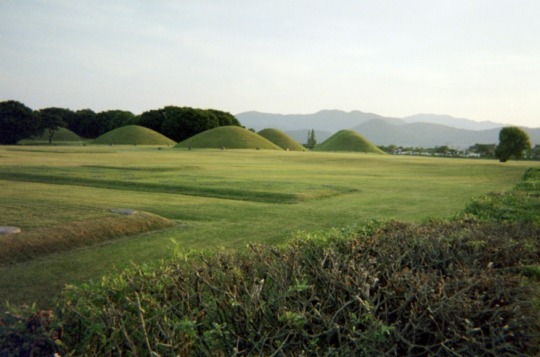
6 notes
·
View notes
Photo

Silla
El reino de Silla gobernó el sureste de Corea durante el período de los Tres Reinos, del siglo I a.C. hasta el siglo VII d.C. La capital era Geumsong (Gyeongju), con un gobierno centralizado y un sistema jerárquico de rangos sociales. La prosperidad de Silla se hace evidente en las magn��ficas coronas de oro que se cuentan entre las piezas de arte m��s preciadas del sureste asiático de la Antigüedad.
Sigue leyendo...
#Historia#Silla#GrutaDeSeokguram#SamgukYusa#ReinaSeondeok#AcuñaciónCoreana#ArquitecturaCoreana#Corea#KimYu-sin#JangBogo#Hyangga#Hwarang#Cheonmachong#Cheomseongdae#SistemaDeRangoóseo#Baekje
0 notes
Photo

Couronnes de Silla
Le royaume de Silla régna sur le sud-est de la Corée pendant la période des Trois Royaumes (1er siècle av. J.-C. - 7e siècle ap. J.-C.) puis, sous le nom de royaume unifié de Silla, sur l'ensemble de la Corée de 668 à 935. Le Silla produisit de belles pièces d'art, mais ses œuvres les plus célèbres sont sans aucun doute les cinq couronnes d'or qui ont été excavées de cinq tombes royales. Ces magnifiques couronnes, ainsi que de nombreux autres bijoux, justifient pleinement le nom de Geumseong, la "ville de l'or", donné à l'ancienne capitale.
Lire la suite...
#Histoire#Silla#GrotteDeSeokguram#ReineSeondeok#PoterieCoréenne#Corée#KimYu-sin#JangBogo#Gyeongju#Goryeo#L'or#Gojoseon#Goguryeo#Gaya#ChoeChiwon#Cheonmachong#Cheomseongdae#TempleBulguksa#SystèmeDeClassementDesOs#Balhae#Baekje
0 notes
Photo
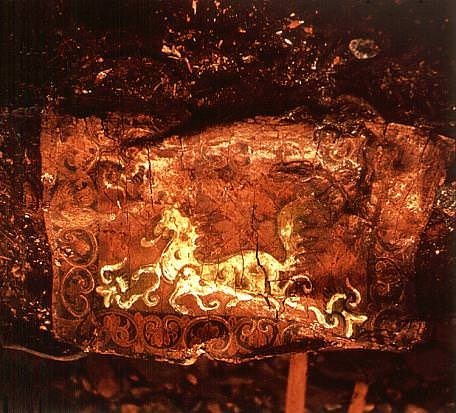
Cheonmachong
Cheonmachong is a 5-6th-century CE royal tomb of the ancient Silla kingdom of Korea located at the Daereungwon Tomb Complex in Gyeongju. It is popularly known as the 'Heavenly Horse Tomb' because of a painting of that animal on a birch-bark saddle-flap found within it. There were over 140 other treasures inside which included a magnificent gold crown, gold jewellery, a gold girdle, and a blue glass cup. Several items from the tomb feature on the official list of National Treasures of Korea.
Tomb Design
The tomb was excavated in 1973 CE at Gyeongju the former capital of the Silla kingdom then known as Geumseong or Seorabol. The Silla kingdom ruled the south-eastern portion of Korea between the 1st century BCE and 7th century CE. It would then go on to control the whole peninsula from 668 to 935 CE. Unlike in some other Silla mound tombs, there is no inscription plaque inside it to indicate exactly who the occupant was, but the richness of the artefacts within it and the presence of a gold crown would suggest it is the tomb of a Silla king. The tomb chamber is wood-lined and was covered in a stone mound with layers of clay set between the stones to make the tomb waterproof. Then the whole was covered in an earth mound, leaving no access point. This meant that the tomb did not suffer looting like many other Korean tombs of the Three Kingdoms period which had horizontal entrance passages. The tomb measures 12.7 metres in height and has a diameter of 47 metres.
Continue reading...
35 notes
·
View notes
Video
youtube
South Korea: Traveling by Car
There are two major differences when traveling by car instead of by bus or train in South Korea. First the ability to stop willy-nilly wherever the heck you desire and it is your responsibility to pay for gas and toll fees. Because gas prices in South Korea are charged by the liter (a quart), we were invited on a road trip to Gyeongju in Gyeongsangbuk-do. Gyeongju is famous for its artifacts, ruins and relics from the Shilla Dynasty, 57 BC to 935 AD. In addition to the Shilla Dynasty the surrounding mountains and valleys hold a plethora of antiquity. The Gyeongju National Parks have hundreds of hiking trails leading to Buddhist carvings, shrines, stone pagodas and temples. Amazing sights to observe are the large green mounds housing tombs rolling across the cityscape called tumuli.
Starting from Paju city in the northwestern corner of South Korea the drive would take five and a half hours to get to Gyeongju on one tank of gas. Our departing time was five o'clock in the morning traveling down highway 23 into the outskirts of Seoul connecting to highway 100. Highway 100 loops the entire city and has several tollbooths attached charging 1,000 won to enter each segment. Once on the highway we would drive until it met up with expressway 1, paying another toll of 1,000 won and continuing our adventure south. Two hours and fifteen minutes later we pulled off at a roadside rest stop to use the bathroom, grab a cup of java, some snacks and fill up the car. 92,000 won later we pulled back out onto the expressway continuing the journey south.
As the sun rose over the horizon line the car zigged through the rural countryside zagging back across the small mountain towns. An ever-stagnant landscape of farmland with plows, rice machinery and farm houses piling up at the edge of the expressway. A scene of both poverty and wealth stretching out as far as the eye could see.
Just shy of three hours later we reached the outskirts of Gyeongju pausing at the tollbooth decorated with traditional Shilla Dynasty roofing to pay the ticket fee of 15,900 won. The reason this toll fee was incredibly larger than the previous ones was distance covered between tollbooths. After a day and a half of tourist activities covering Anapji Pond, Bulguk-sa temple, the Gyeongju National Museum, a hike on Namsan Mountain to Chilbulam hermitage, visiting Seokguram Grotto, and a stroll through Tumuli Park to get a glimpse of the far east's oldest observatory: Cheonmachong.
4 notes
·
View notes
Text
CHENMACHONG
< CHEONMACHONG > Cheonmachong, formerly Tomb No.155 in South Korea, is a tumulus located in Gyeongju, South Korea. The name “Cheonmachong” means Sky horse tomb. This tomb was built in the style of Silla. Excavation of the tomb began on April 16, 1973, and is believed to date probably from the fifth century but perhaps from the sixth century CE. The tomb was for an unknown king of the Silla…
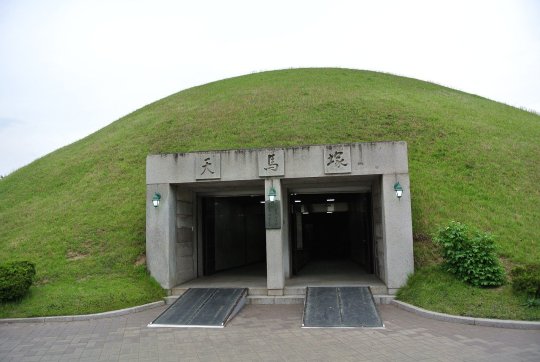
View On WordPress
0 notes
Text
Watch "The Gold Crown from the Cheonmachong Tomb!👑✨" on YouTube
youtube
Chenma mean haven horse, Chong mean Tomb. This is Korea Tomb no. 155
0 notes
Text

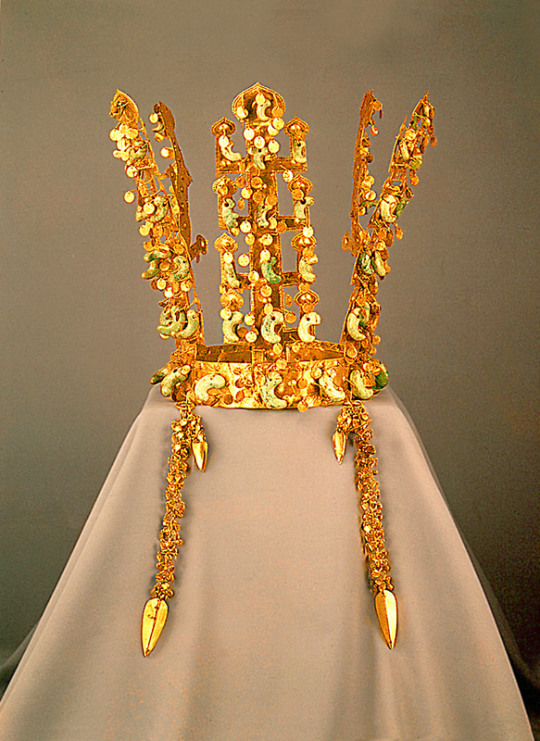
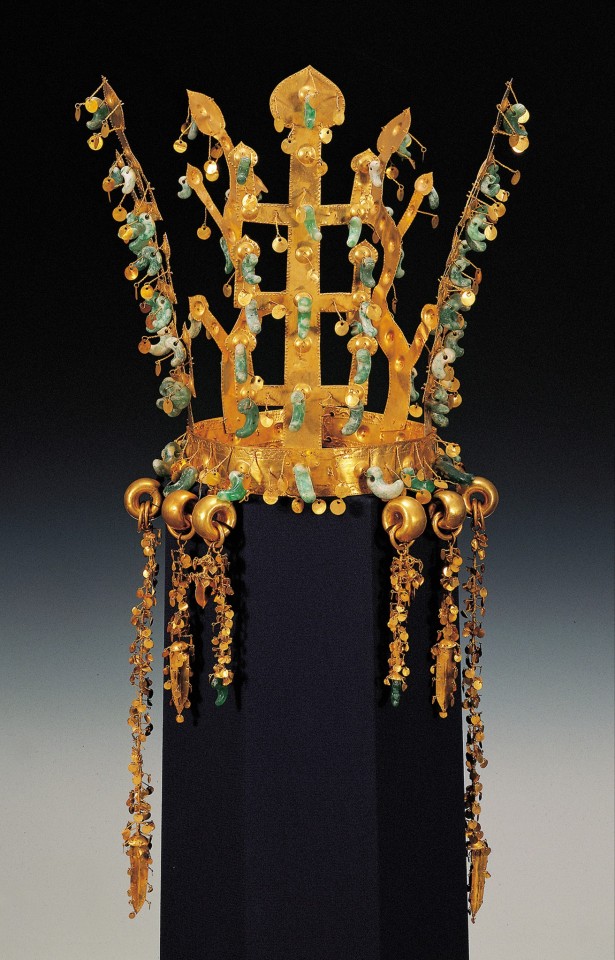
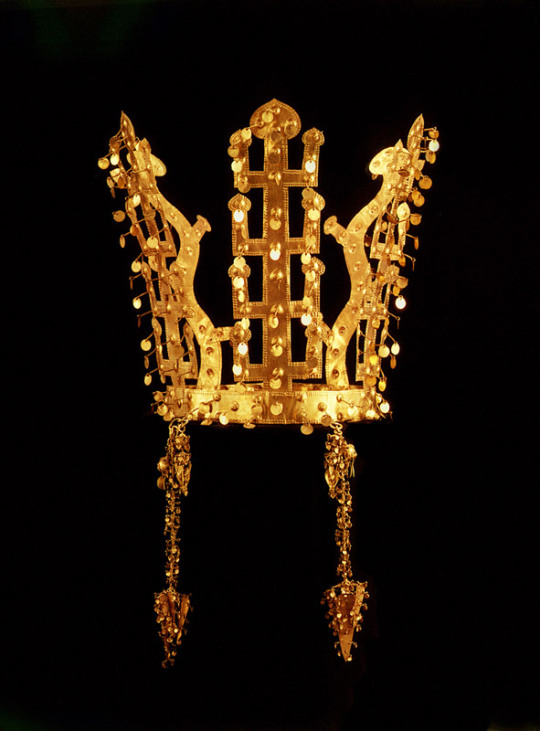
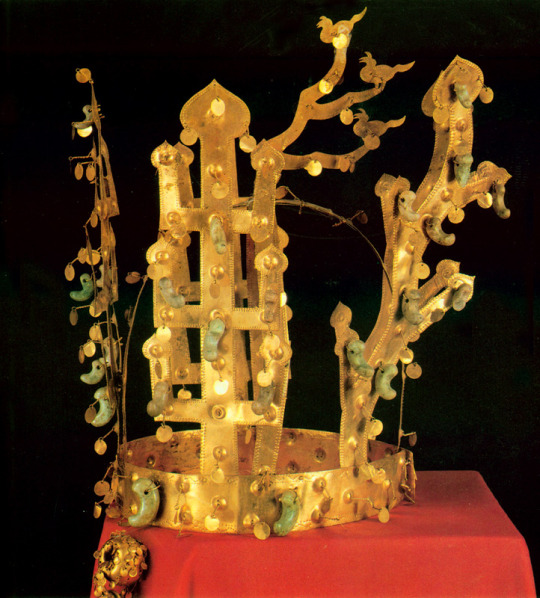
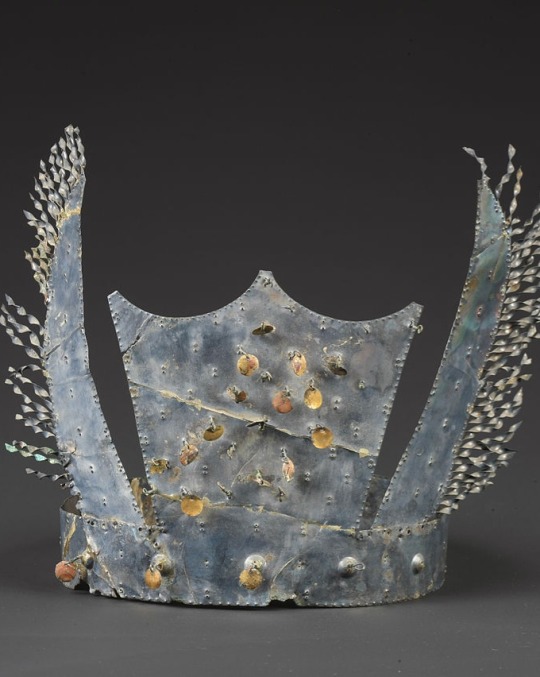
The Crowns of Silla, ca. 5th-7th century (present day North/South Korea)
(l-r) 금관총 금관, 천마총 금관, 황남대총 북분 금관, 금령총 금관, 서봉총 금관, 은관
#gold crown from geumgwanchong#gold crown from cheonmachong#gold crown from hwangnamdaechong#gold crown from geumnyeongchong tumulus#gold crown from seobongchong tumulus#the silver crown#south korea#north korea#asia#east asia#the crowns of silla#fashion#metal#crowns#jewellery#gold#silver#jade#silla
5 notes
·
View notes
Text
Gyeongju Rahan Select
This hotel costs 260,000 won per night. Overlooking Bomun Lake, Lahan Select Gyeongju is about 2 km from Bomun Tourist Complex and a 10-minute drive from Gyeongju World Culture Expo Park. Cheomseongdae, Anapji, and Cheonmachong, which contain the history of Silla, are a 20-minute drive, and Seokguram Grotto is a 35-minute drive away. It is also a 25-minute drive from Gyeongju Express Bus Terminal and a 40-minute drive from KTX Singyeongju Station. The hotel has an outdoor swimming pool as well as an indoor swimming pool for children and adults only. You can feel relaxed in the book store. There are also plenty of other things to enjoy, such as a children-only 'Play Zone', 'The Strike' bowling alley, sauna and fitness center. In addition to regular rooms, we also have 'Camping in the Jungle' with tents and an ondol room. Air conditioning, TV, refrigerator, and table are provided inside, and bathroom amenities are provided. 'The Plate' serves buffet meals, and 'Markt 338' offers a variety of gourmet experiences including Japanese, Italian, Korean, and Thai food. can. The 'lounge bar' in the lobby is a good place to relax with the cool windows in the background.

2115 April
2120 Julia E
0 notes
Text
Gyeongju, golden city!
Day 1-part 1
On monday we woke up early to take the bus to Gyeongju, it's a four hour bus ride amd i had to pee for three of those hours and they only went to one rest stop when only one hour was left. I had to concentrate every cell in my body to not die. Haha anyway when we arrived it immediatly felt so different from Seoul and every other city I've been to, it was wide and spacious and most of the land is farm land.
We rented a scooter cause why not and the adventure began by T as always not reading the map correctly, not listening to me when i told him the Thombs were the opposite direction whe wanted to go and then halfway through realizing he was wrong i was right and i am always right because i can actually read maps really well, They're mostly visual and i am a very visual person. After me bragging the whole way there we arrived to the Royal thombs.
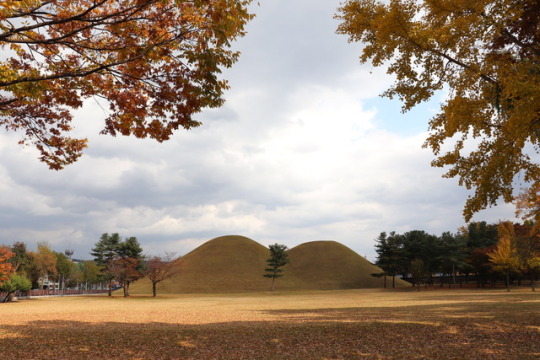
The thombs are mounds, which makes we wonder what was up with ancient humans and wanting to make thise type of shaped thombs, closer to heaven? Maybe

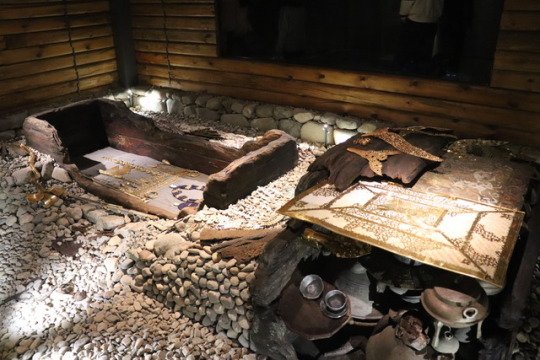
This thomb is Cheonmachong, they k ow a little more of this thomb than the others because they found some covers engraved with a golden celestial horse. This is from the time of Silla which is a looong time before even Christ was born, i cant really wrap my brain on the cronological time line but yes.
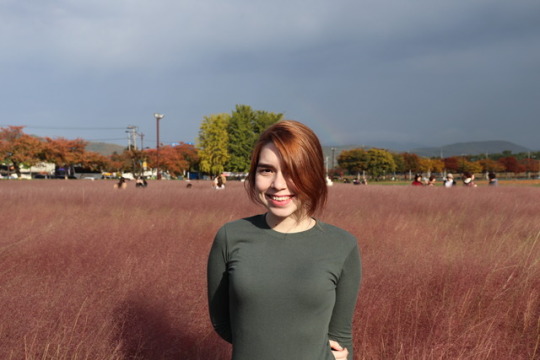
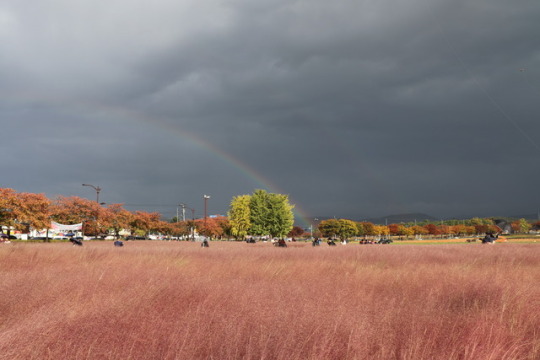
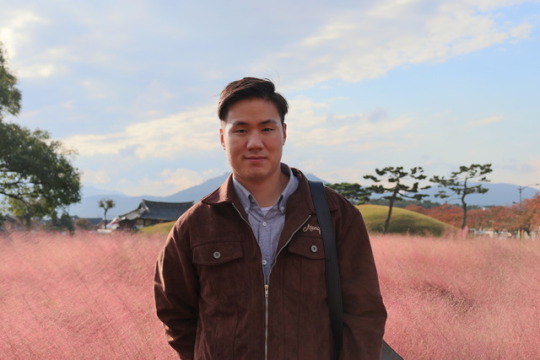
The pink thingies, it rained before this so thats why on T's picture its clear and behind me its clowdy cause the sky was being a bitch but there was a rain bow so cool (of you think oh she looks cold and tired...you are right also the sun was in my eyes and unlike T who likes to brag thag his small eyes protect him from the sun -his words not mine- my eyes do not do that )
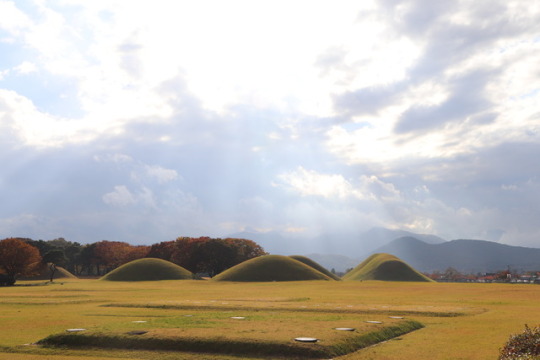
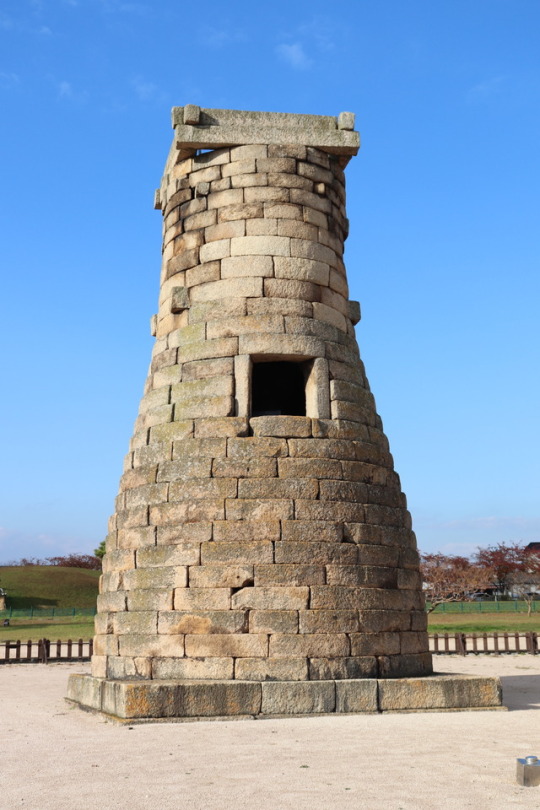
This is, if i remember well the first observatory in east Asia.
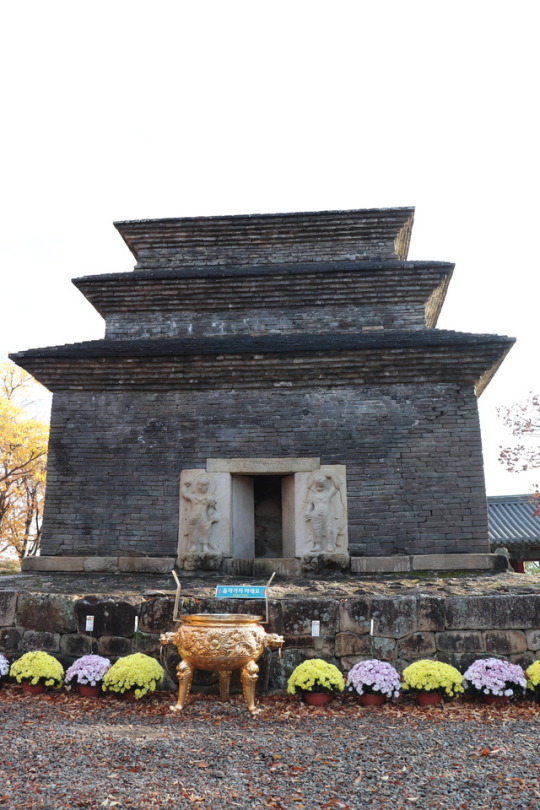

Then we went to thes Square pagoda thats very old but i cant exactly remember how old, i do know that the Japanese rebuilt it when they occupied Korea ..not sure it it was during the last occupation but yeah that surprised me because when they were here they liked destroying more than anything else. I dont say this as a biased diss but the Japanese imperial army liked reminding they were in control and burnt many buildings they didnt like and other mean stuff but anyways yes the rebuilt this one. The bell you can ring it for health.
#living in korea#living in seoul#seoul#korea#south korea#living abroad#life in korea#married life#life in seoul#seul#travel#visit korea
2 notes
·
View notes
Photo

Chestlace
6th Century
This chestlace was found on the chest area of the occupant of a tomb in Cheonmachong. The central part was hung in a U-shape around the chest, with the two ends thrown back over the shoulders. The round blue jade pieces and hollow gold beads were linked into six strands, which were then braided. Cuboid gold ornaments were inserted to divide the central part into five strands and the ends into three strands. For additional decoration, one curved jasper-based jade piece was hung in the center and from each end. Chestlaces like this one were popular as symbolic burial objects for members of Silla’s ruling class.
From the Gyeongju National Museum.
71 notes
·
View notes
Photo
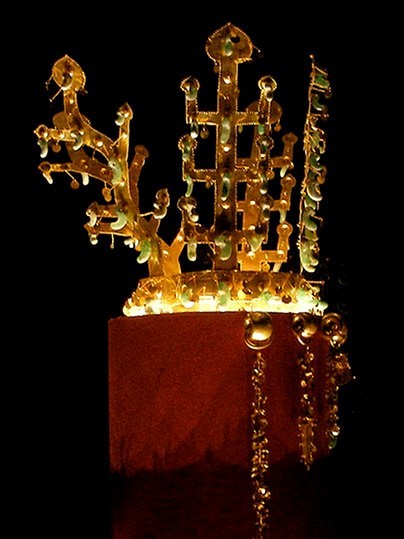
Reina Seondeok
La reina Seondeok (Sondok) gobernó el antiguo reino de Silla de 632 a 647 d.C. y fue la primera soberana femenina de la antigua Corea. Silla estaba al borde de dominar toda la península coreana y Seondeok ayudó a progresar a su reino hacia este objetivo. Su reinado también se distinguió por la progresiva integración del budismo, que ya era la religión oficial del estado, y la construcción del famoso Cheomseongdae, el observatorio más antiguo de Asia Oriental.
Sigue leyendo...
1 note
·
View note
Photo
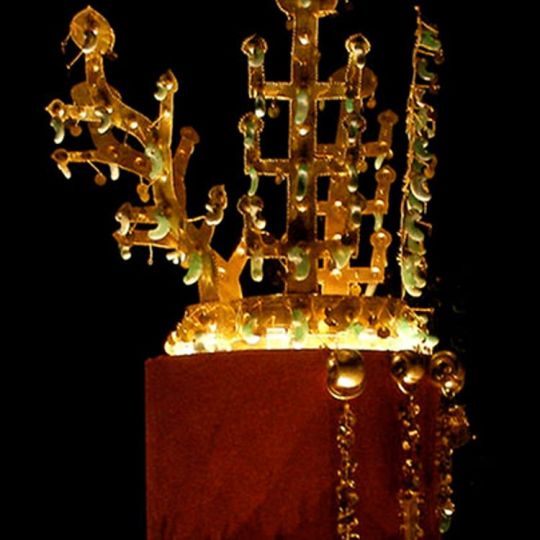
Reine Seondeok
La reine Seondeok régna sur l'ancien royaume de Silla de 632 à 647 et fut la première femme souveraine de la Corée antique. Silla était sur le point de dominer l'ensemble de la péninsule coréenne et Seondeok contribua à faire progresser son royaume vers cet objectif. Son règne se distingue également par l'intégration accrue du bouddhisme, déjà religion officielle de l'État, et par la construction du célèbre Cheomseongdae, le plus ancien observatoire d'Asie orientale.
Lire la suite...
1 note
·
View note
Photo
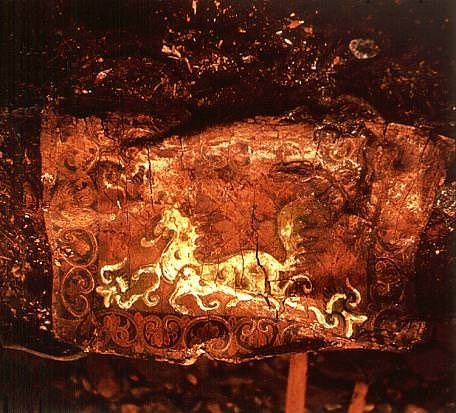
Cheonmachong
Cheonmachong is a 5-6th-century CE royal tomb of the ancient Silla kingdom of Korea located at the Daereungwon Tomb Complex in Gyeongju. It is popularly known as the 'Heavenly Horse Tomb' because of a painting of that animal on a birch-bark saddle-flap found within it. There were over 140 other treasures inside which included a magnificent gold crown, gold jewellery, a gold girdle, and a blue glass cup. Several items from the tomb feature on the official list of National Treasures of Korea.
Tomb Design
The tomb was excavated in 1973 CE at Gyeongju the former capital of the Silla kingdom then known as Geumseong or Seorabol. The Silla kingdom ruled the south-eastern portion of Korea between the 1st century BCE and 7th century CE. It would then go on to control the whole peninsula from 668 to 935 CE. Unlike in some other Silla mound tombs, there is no inscription plaque inside it to indicate exactly who the occupant was, but the richness of the artefacts within it and the presence of a gold crown would suggest it is the tomb of a Silla king. The tomb chamber is wood-lined and was covered in a stone mound with layers of clay set between the stones to make the tomb waterproof. Then the whole was covered in an earth mound, leaving no access point. This meant that the tomb did not suffer looting like many other Korean tombs of the Three Kingdoms period which had horizontal entrance passages. The tomb measures 12.7 metres in height and has a diameter of 47 metres.
Continue reading...
25 notes
·
View notes
Photo

POWER BLADE (KOR)
Menifee- Cheonmachong, by Lost Mountain
Photo (X)
#korea#kor#thoroughbred#sports#sporthorse#equine#horse#horses#equine sports#equestrian#south korea#international#horse racing#racehorse#racehorses#power blade
13 notes
·
View notes
Photo
For those who don't know, this is what that banner's referencing: https://en.m.wikipedia.org/wiki/Cheonmachong

Anciencts like this guy disappeared before even the Windigos were first recorded, so nopony knows if they truly existed~
“A thousand years ago” seems to come up a lot as the cutoff point for things actually pertinent to history~
#drawblog#OC#magnificent#I visited there a few days ago#put a picture of it in the artist chat on my Discord and said 'who wants to draw this ancient Korean king's OC'#Dark said yes but only if I sent in an ask#so here we are
46 notes
·
View notes